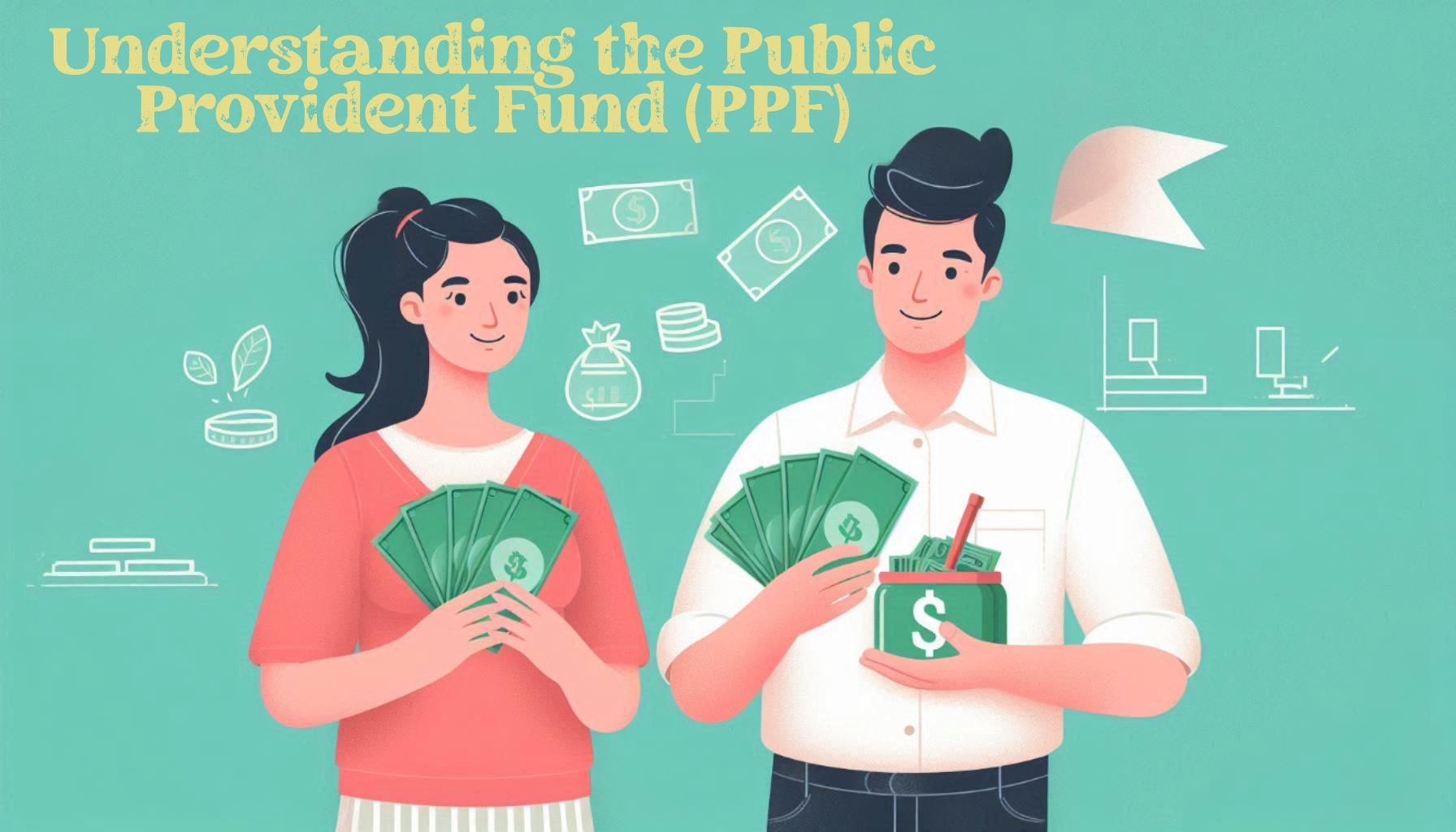The Public Provident Fund (PPF) is a long-term investment scheme established by the Government of India in 1968. Designed to encourage savings among the general public, the PPF offers individuals an opportunity to build a secure financial future through a government-backed savings instrument.
Key Features of the PPF Scheme
- Introduction and History: The PPF scheme was launched through a notification by the Ministry of Finance in June 1968 and became operational in Head Post Offices from January 1, 1979. Over the years, the scheme has undergone various amendments, adapting to the changing financial landscape.
- Account Types: A PPF account can be opened by any Indian citizen, including minors through their guardians. However, Non-Resident Indians (NRIs) are not eligible to open new accounts under this scheme.
- Subscription Limits: Individuals can subscribe to a minimum of ₹500 and a maximum of ₹1,50,000 in a financial year. This limit is cumulative for all accounts held by an individual, including those opened on behalf of minors.
- Interest Rate: The interest rate on PPF accounts is set by the government and is reviewed quarterly. As of now, the interest rate is set at 7.1% per annum, compounded annually.
- Investment Duration: The PPF has a fixed maturity period of 15 years, which can be extended in blocks of five years.
Benefits of the PPF
- Tax Benefits: Contributions to the PPF are eligible for tax deductions under Section 80C of the Income Tax Act, making it an attractive option for tax savings.
- Safety: The PPF is backed by the government, ensuring that the principal and interest are secure.
- Liquidity: Although the PPF is a long-term investment, partial withdrawals are allowed after the completion of the fifth financial year, offering some liquidity to investors.
PPF Calculator: Making Calculations Easy
To help individuals plan their investments, a PPF calculator is an invaluable tool. It allows users to estimate the maturity amount based on various parameters, such as:
- Frequency of Investment: Users can choose how often they wish to invest (monthly, quarterly, half-yearly, or yearly). This frequency significantly influences the final maturity amount.
- Monthly Investment Amount: Users can input the amount they plan to invest regularly, ensuring it does not exceed the prescribed limits.
- Interest Rate: The calculator typically uses the prevailing interest rate but allows for user input to account for future rate changes.
- Duration of Investment: Users can specify the investment duration in years, with a minimum of 15 years.
Calculation Formula
The PPF calculator employs a formula to compute the future value of the investments. The formula used is:
M=P((1+i)n−1)/i)
Where:
- ( M ) = Maturity amount
- ( P ) = Annual installments
- ( i ) = Interest rate per period
- ( n ) = Total number of periods
For example, if an individual invests ₹5,000 monthly at an interest rate of 7.1% for 20 years, the PPF calculator would compute a maturity amount of approximately ₹26,63,315.27.
Historical Amendments and Regulations
The PPF scheme has seen various amendments to adapt to economic changes and ensure compliance with the law:
- Subscription Limits: Initial rules allowed subscriptions up to ₹1,00,000 per year, which has been upheld in subsequent amendments.
- Eligibility: Clarifications have been made regarding the eligibility of individuals, especially concerning NRIs and joint accounts.
- Guardian Rules: The rules state that only one PPF account can be opened for each minor, and parents cannot open separate accounts for the same child.
- Account Closure and Transfers: Guidelines also exist regarding the closure of accounts, especially in cases of the account holder’s demise or if the account is opened irregularly.
Additional Considerations
- Operational Flexibility: Account holders have the flexibility to manage their investments, including the option to make partial withdrawals after five years.
- Documentation: Opening a PPF account requires specific forms and documentation, ensuring that all regulatory requirements are met.
- Age Limitations: There is no upper age limit for opening a PPF account, making it accessible to individuals of all ages.
- Impact of Contributions: It is critical for subscribers to adhere to the contribution limits. Deposits exceeding ₹1,50,000 are treated as irregular and do not earn interest.
New rules (2024)
Updated Interest Rates for Minors
The recent updates to the Public Provident Fund (PPF) rules, effective October 1, 2024, introduce significant changes, especially for minors. Under the new guidelines, PPF accounts held in the name of minors will earn interest at the rate applicable to Post Office Savings Accounts (POSA) until they reach 18 years of age.
This adjustment not only provides a more favorable return during childhood but also aids in financial literacy as these young investors transition into adulthood, with their account maturity periods beginning at that milestone.
Managing Multiple PPF Accounts
For individuals with multiple PPF accounts, the new rules clarify how interest is calculated across these accounts. The annual investment limit of Rs 1.5 lakh remains intact, but now there’s an emphasis on consolidating funds.
If the total balance across all accounts is within the limit, any excess in secondary accounts will be merged into the primary account. Conversely, any surplus in secondary accounts exceeding this limit will not earn interest.
This change aims to discourage excessive account holdings while encouraging investors to focus on their primary investments.
Implications for Non-Resident Indians (NRIs)
The updated guidelines also significantly impact Non-Resident Indians (NRIs) with existing PPF accounts. While NRIs can maintain their accounts until maturity, they will only earn POSA interest after September 30, 2024, if they do not meet specific residency criteria. This change necessitates a reevaluation of investment strategies for many NRIs, highlighting the importance of understanding these new residency requirements as they navigate their financial futures.
A Commitment to Streamlined Financial Management
These updates reflect a broader trend towards enhancing accessibility and practicality in savings schemes. By addressing the unique needs of different investor groups—such as minors and NRIs—the government demonstrates a commitment to supporting diverse financial goals.
As investors adapt to these new regulations, they have an opportunity to reassess their PPF strategies and make informed decisions that align with the evolving landscape.
The PPF scheme is not only a tool for wealth accumulation but also a strategic financial instrument that aids individuals in tax planning and saving for long-term goals. Understanding its features and utilizing a PPF calculator can significantly enhance one’s financial planning strategy, allowing for informed investment decisions over the long term.
FAQs
What happens if I do not deposit the minimum amount in my PPF account in the initial year?
If a subscriber does not deposit at least ₹500 in the initial year, the subscription will be returned without interest. The account cannot be considered valid in this case.
Reference: DG Posts letter No. 1-23/75-SB dated 8.2.1979
What if I deposit ₹500 in the first year but fail to maintain the minimum subscription in subsequent years?
If you subscribe ₹500 in the first year but fail to meet the minimum subscription in subsequent years, your account will be treated as discontinued. You will not be eligible for loans or partial withdrawals unless you revive the account. You cannot open another PPF account in addition to the discontinued one.
Reference: MOF (DEA) letters No. F.3 (8)-PD/72 dated 16.8.1972 and F.7/2/97-NS II dated 9.2.1998
How is the date of deposit determined when using a local cheque or draft?
When deposits are made using a local cheque or draft, the date of realization of the amount will be treated as the date of deposit.
Reference: MOF (DEA) letter No. F.7/7/2008-NS-II dated 10.2.2010
What happens to a discontinued account?
If a subscriber cannot continue after the initial financial year, the account will be considered discontinued. You can only withdraw the amount after the 15-year maturity period, along with accrued interest. The facility for loans and withdrawals will not be available from a discontinued account.
Can I revive a discontinued PPF account?
Yes, a discontinued account can be revived during the maturity period but cannot be revived or closed after maturity. The account will continue to earn interest until it is closed.
What are the requirements for making subscriptions?
Subscriptions must be in multiples of ₹5, and you can make these in lump sums or installments, not exceeding twelve in a financial year. The total annual contribution must be between ₹500 and ₹1,00,000.
Reference: Ministry of Finance (DEA) letter No. F.3 (8)-PD/72 dated 6.8.1972
Can I transfer my PPF account to another office?
Yes, you can apply to transfer your PPF account from one “Account Office” to another, including transfers between banks and post offices.
What should I do if I lose my passbook?
If you lose your passbook, you can apply for a duplicate at the Accounts Office by paying a nominal fee of ₹1.
What if I miss my subscription for a year?
If you fail to subscribe in any year, you may approach the Accounts Office for condonation of the default by paying a fee of ₹50 along with the arrear subscription of ₹500 for each year missed.
Reference: MOF (DEA) Notification No. GSR 768 (E) dated 15.11.2002
How is interest calculated on my PPF account?
Interest is calculated on the lowest balance in the account between the close of the fifth day and the end of the month. It is credited to the account at the end of each year.
Reference: MOF (DEA) Notifications No. F.6 (1)-PD/86 dated 30.4.1986
Do I earn interest if I have discontinued my subscription?
Yes, the account continues to earn interest even if subscriptions are discontinued, provided the account is within its maturity period.
Reference: NSC Nagpur letter No. 864-84/1(6) CR/68-VI dated 5.1.1973
What if my PPF account matures and I wish to keep it open?
After maturity, the account can continue to earn interest but cannot be revived for further subscriptions. If you wish to close it, you must do so according to the rules.
Reference: MOF letter F. No. 7/4/2008-NS-II dated 1.6.2011



Leave a Reply